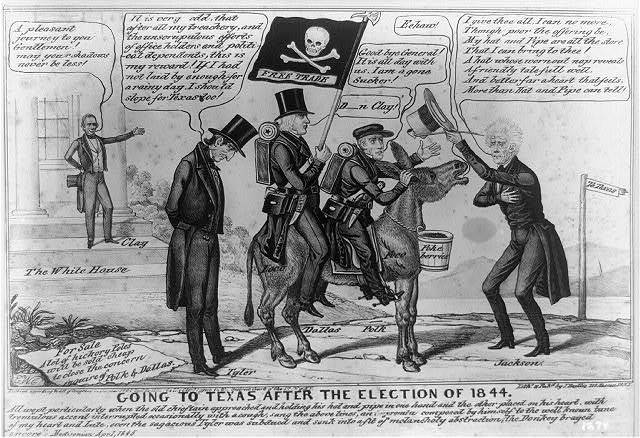In an ever changing political landscape cartoons have been at a constant. This proves to us that pictures are indeed worth a thousand words, and that they do have impact on how we view politics.
The Internet causes democratization of the creation of art. Rather than political cartoons being made by The New York Times or any publication, anyone can make art that caters to any sort of demographic. An artist doesn’t need a major corporation to be successful just because their work isn’t in a newspaper or on some online publication. With social media ever expanding its grasp on the collective consciousness, I would like to ask you to recall moments where you have seen independent artists be successful without the need for a company to make it big.
Political comics, and cartoons have always been a wonderful tool in history to communicate criticisms, ideas, and to persuade the viewer. Cartoons are a great tool to consolidate information and make it easier to disseminate a message. Politics, especially American politics have used comics as a vehicle to spread misinformation, and reinforce ideas that have been straining the relationship between parties. The artist is able to bend the truth, not really requiring any sources, and is able to create a scenario in which the information they provided is true in the comic they made but not reflective of reality. With social media everyone has access to information that isn’t behind a money based subscription, which means that is much more difficult to find information that is trustworthy and fact checked. In fact memes about politics and political cartoons aren’t all that different as they use the same tools to trick its audience. It is up to the reader to inform themselves and make sure that what they are reading actually has truth to it.
According to a paper made by Nazra Zahid Shaikh, Ruksana Tariq, and Dr. Najeeb-us-Saqlain political cartoons have a lot of tools under their belt to entice the reader. Is it the use of irony, exaggeration, labeling and analogy to express their/public opinion, some combination of two or more of these? Each of these attributes has something to contribute to a cartoon. It is the artist using their tools at their disposal to push whatever agenda they have. Here are some examples.
The New York Times hosts an annual student editorial contest for young up and coming artists whose art exceeded the publications expectations. Every year since 2015 the New York Times chooses more than 5 winners as well as countless runner ups to be featured on their paper as well as website. At first glance this is seen as a beautiful exchange between corporation and artist, a strong sense of empowerment held up by a titan institution however, even this can be seen as faulty as not all of them can be winners, or rather suit the corporations needs, its image that it needs to upheld. They missed one key important step they could have taken, and that would have been linking us to the artists’ social media accounts. If we could have seen who these artists were, and had a direct way to see their art this could have exposed readers to creators that deserved the attention. The New York Times has everyone’s best interests at heart and must continue to serve as a pillar of journalism, so it isn’t farfetched to assume they did it to protect themselves as well as these young artists. However their image is extremely important to a point where they will take drastic measures to protect the companies image. This can be seen in The New York Times Global Edition where now due to an incidence where Anti-Semitic Imagery was used in a political comic there is no longer a political cartoon section for that particular offset of The New York Times. The Times had apologized, but the damage had been done and there wasn’t much the company could have done to combat this bad publicity except by removing cartoons entirely of course.
With the rise of social media, its use as a platform to share and create has skyrocketed tremendously. Political cartoons have risen in popularity as a result allowing for information to be disseminated. It is up to the reader to decide whether or not the information is valid and with this article you’ll be more prepared to understand and overall be more aware of the media you consume.












